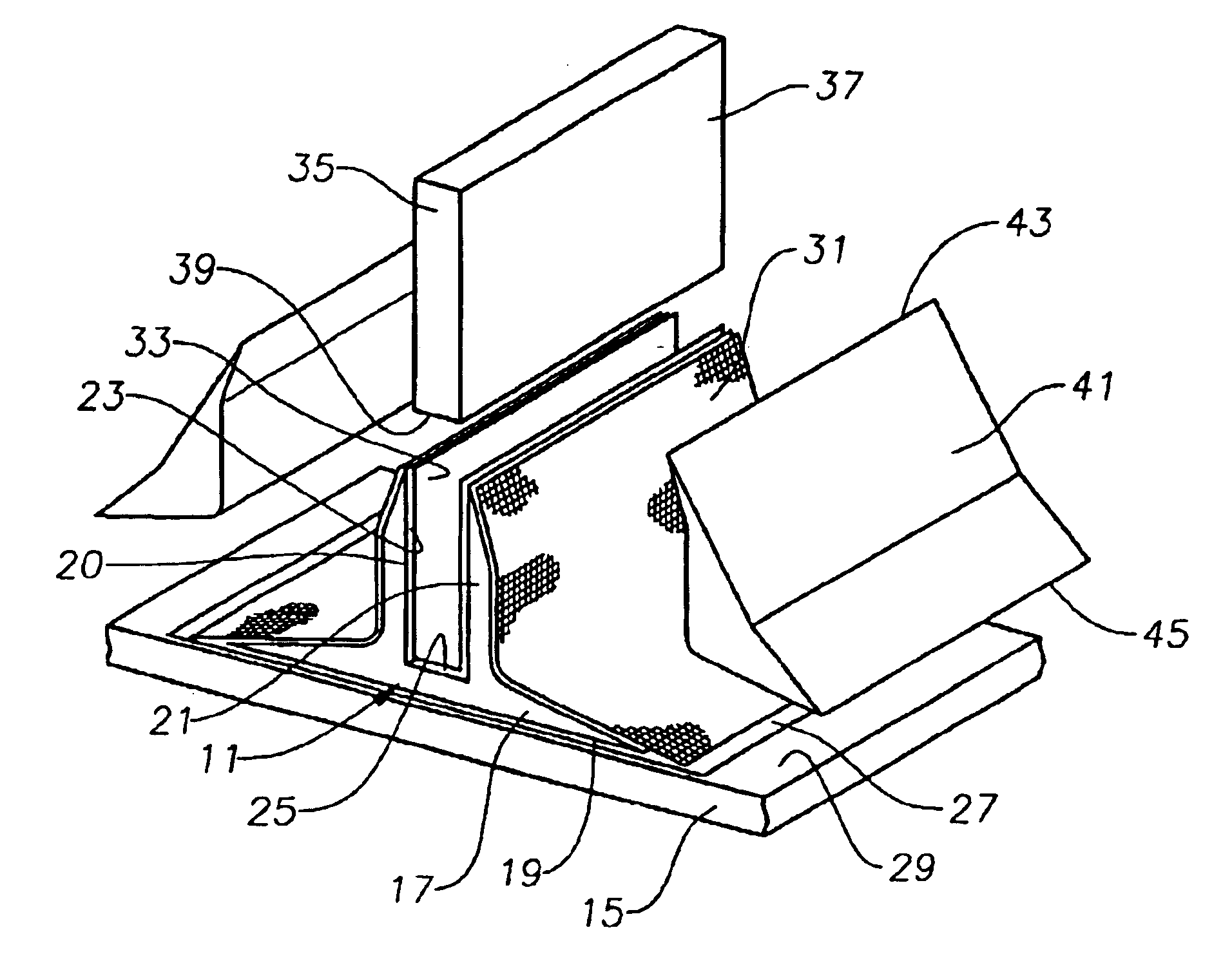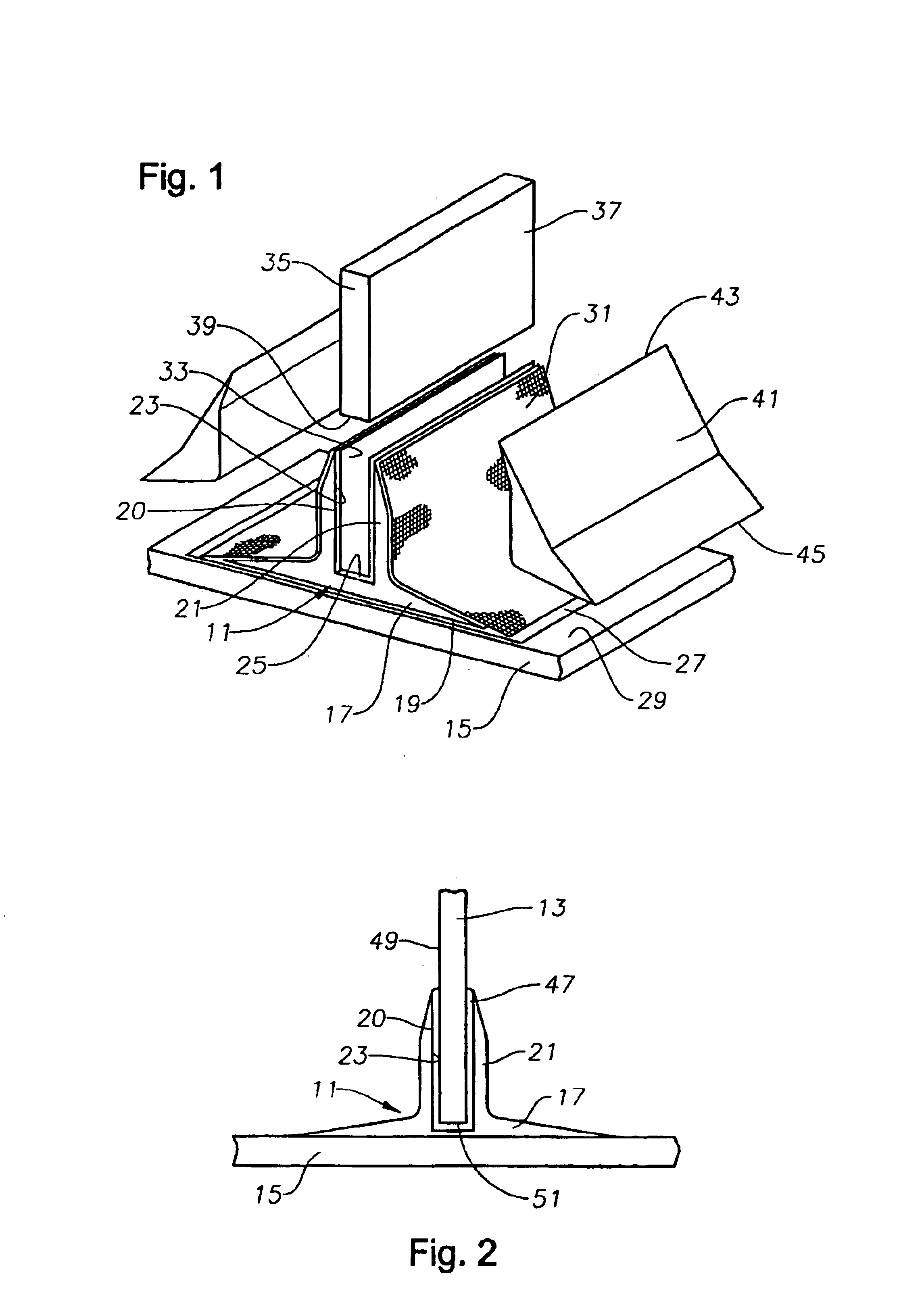Paste-bond clevis joint
a clevis joint and paste bond technology, applied in the field of components assembly, can solve the problems of increasing the weight and cost of the joint, the joint cannot be easily reassembled, and the use of fasteners adds weight and cost, so as to reduce the complexity and cost of fabrication, and reduce the effect of inter-laminar tension
- Summary
- Abstract
- Description
- Claims
- Application Information
AI Technical Summary
Benefits of technology
Problems solved by technology
Method used
Image
Examples
Embodiment Construction
FIGS. 1 and 2 show a pi-shaped, 3-D, woven preform 11 used to connect two composite parts 13, 15, which may be, for example, a frame member 13 and a skin 15, or other member. Preform 11, frame 13, and skin 15 are infused with a resin, for example, 977-3, available from Cytec Industries, Inc. of West Paterson, N.J. Preform 11 is not cured prior to assembly. Frame 13 is cured prior to assembly, and skin 15 may be cured prior to preform 11 being adhered to skin 15. Alternatively, skin 15 and preform 11 may be co-cured as an assembly. Preform 11 may be woven from materials such as carbon fibers, Kevlar fibers, glass fibers, or other materials, or may be a combination of material types.
As shown in the figures, preform 11 has a base 17 on its lower portion that has a continuous, flat lower surface 19. A pair of spaced-apart planar legs 21 extend vertically upward from base 17, forming a clevis 20, or slot. Each leg 21 is at a position that is offset from, but near to, the center of base 1...
PUM
| Property | Measurement | Unit |
|---|---|---|
| tensile strength | aaaaa | aaaaa |
| tensile strength | aaaaa | aaaaa |
| tensile strengths | aaaaa | aaaaa |
Abstract
Description
Claims
Application Information
 Login to View More
Login to View More - R&D
- Intellectual Property
- Life Sciences
- Materials
- Tech Scout
- Unparalleled Data Quality
- Higher Quality Content
- 60% Fewer Hallucinations
Browse by: Latest US Patents, China's latest patents, Technical Efficacy Thesaurus, Application Domain, Technology Topic, Popular Technical Reports.
© 2025 PatSnap. All rights reserved.Legal|Privacy policy|Modern Slavery Act Transparency Statement|Sitemap|About US| Contact US: help@patsnap.com


